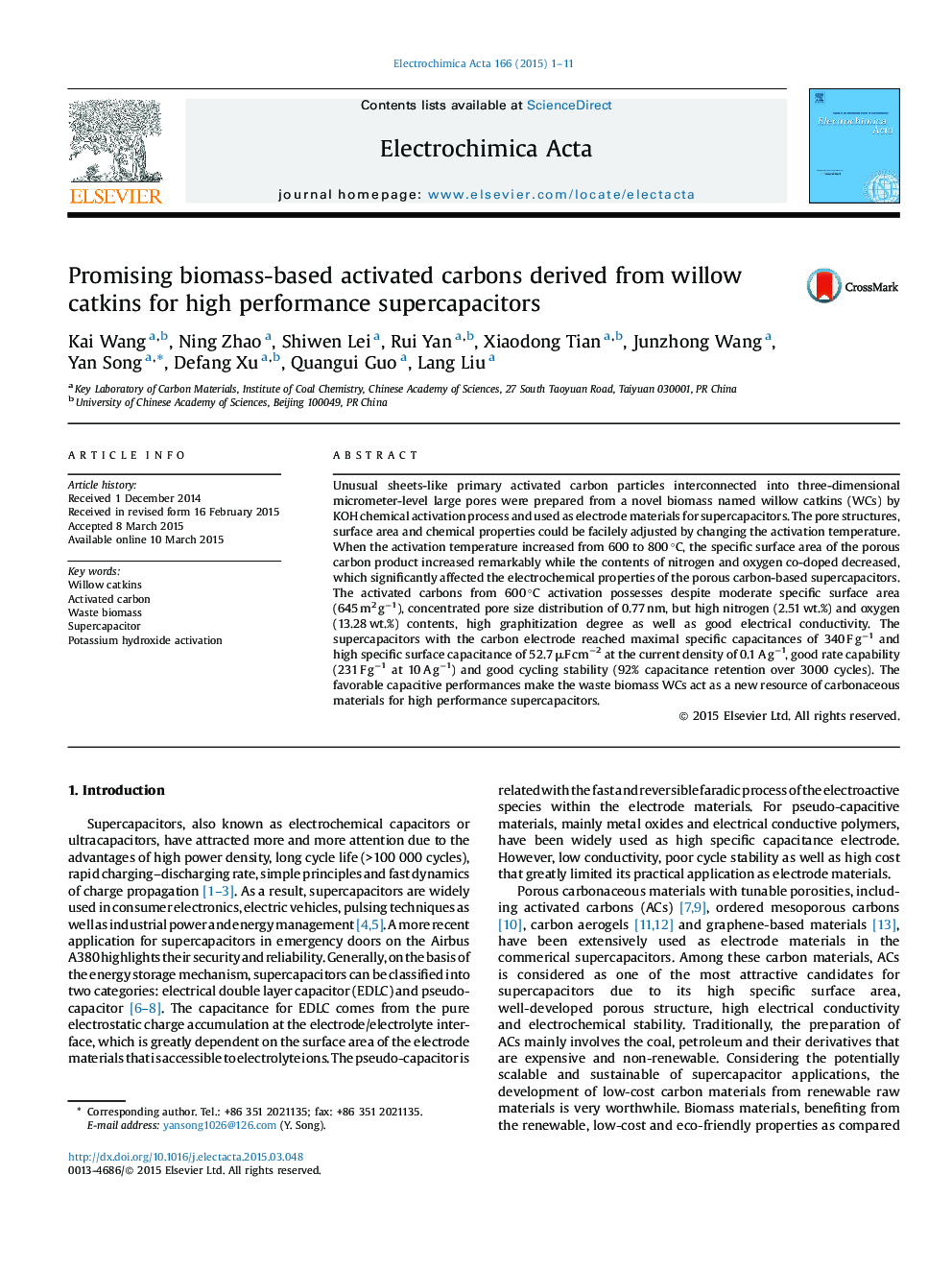| Article ID | Journal | Published Year | Pages | File Type |
|---|---|---|---|---|
| 6611296 | Electrochimica Acta | 2015 | 11 Pages |
Abstract
Unusual sheets-like primary activated carbon particles interconnected into three-dimensional micrometer-level large pores were prepared from a novel biomass named willow catkins (WCs) by KOH chemical activation process and used as electrode materials for supercapacitors. The pore structures, surface area and chemical properties could be facilely adjusted by changing the activation temperature. When the activation temperature increased from 600 to 800 °C, the specific surface area of the porous carbon product increased remarkably while the contents of nitrogen and oxygen co-doped decreased, which significantly affected the electrochemical properties of the porous carbon-based supercapacitors. The activated carbons from 600 °C activation possesses despite moderate specific surface area (645 m2 gâ1), concentrated pore size distribution of 0.77 nm, but high nitrogen (2.51 wt.%) and oxygen (13.28 wt.%) contents, high graphitization degree as well as good electrical conductivity. The supercapacitors with the carbon electrode reached maximal specific capacitances of 340 F gâ1 and high specific surface capacitance of 52.7 μF cmâ2 at the current density of 0.1 A gâ1, good rate capability (231 F gâ1 at 10 A gâ1) and good cycling stability (92% capacitance retention over 3000 cycles). The favorable capacitive performances make the waste biomass WCs act as a new resource of carbonaceous materials for high performance supercapacitors.
Related Topics
Physical Sciences and Engineering
Chemical Engineering
Chemical Engineering (General)
Authors
Kai Wang, Ning Zhao, Shiwen Lei, Rui Yan, Xiaodong Tian, Junzhong Wang, Yan Song, Defang Xu, Quangui Guo, Lang Liu,
